As longtime advocated of bamboo, we’ve written at great length about the countless virtues of this amazing grass. It’s a plant of unsurpassed strength and versatility, with an incredibly rich and colorful cultural history. Check out our articles on What’s so great about bamboo and Bamboo symbolism and folklore to learn more about that.
But despite its many benefits, planting bamboo is actually somewhat controversial. Many amateur gardeners will even try to talk you out of planting a bamboo hedge. And the lack of consensus leaves many people wondering: to boo or not to boo?
Regarding the great debate on whether or not to grow bamboo, we are certainly aware of the controversy. So we’d like to help you make the right decision before you rush into planting a bamboo privacy screen. In the following article we’ll discuss the main pros and cons of bamboo screens and hedges. We’ll also talk about how to minimize the cons if you decide to go ahead with it.
NOTE: This article first appeared in July 2019, most recently updated in May 2024. Also, be sure to check out our handy list of the Best bamboo species for screens and hedges.
Pros and Cons of bamboo hedges
PROS
- Bamboo grows quickly, if you’re in a hurry to establish a privacy screen
- It grows thick and bushy, assuring good privacy
- It can grow very tall, easily providing privacy for second-story windows
- An evergreen, bamboo will not lose its leaves in winter (resulting in less privacy)
- Most people consider bamboo to be an attractive plant: it sounds nice when the winds blows through, it has no prickly thorns or sticky sap, and it doesn’t drop messy berries or an excessive quantity of leaves
CONS
- Bamboo can grow aggressively, quickly overreaching the area intended for the hedge
- Privacy screens normally go along property lines, so a fast-growing variety of bamboo is likely to sprawl out into the neighbor’s property, which they might not want
- It can be very difficult to remove bamboo from the ground, if you should change your mind after a few years
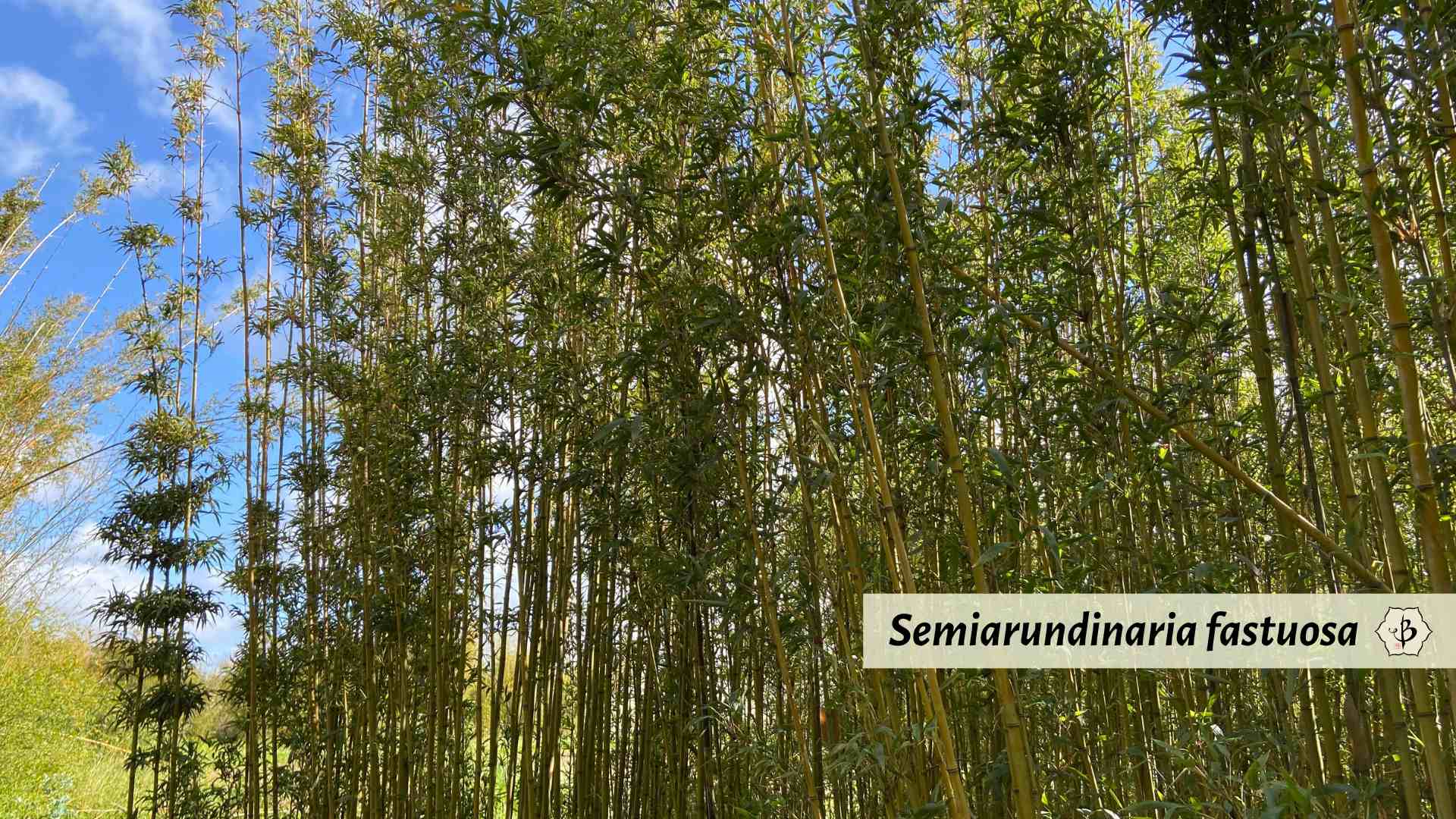
A careful gardener can make the most of bamboo and avoid the potential problems
As you can see, there are some great horticultural and aesthetic benefits to planting a bamboo privacy screen. And the biggest concern is that an established bamboo plant will get out of control.
But with an ounce of caution and a little more work at the front end, you can eliminate those problems that might crop up in the future.
How to keep your bamboo under control
To prevent your privacy screen from producing a primal scream, there are a few precautions you should absolutely take before the bamboo goes in the ground.
ROOT BARRIERS
The most important thing you can do is bury a rhizome root barrier around the area where you will be planting the bamboo. It might not seem necessary at first, but within a few years, you could have a monster on your hands.
Not every bamboo is so aggressive, but some of them have roots that will grow like crazy. (Check out our article on Running Bamboos). The problem is, it’s very difficult for a non-expert to tell the difference.
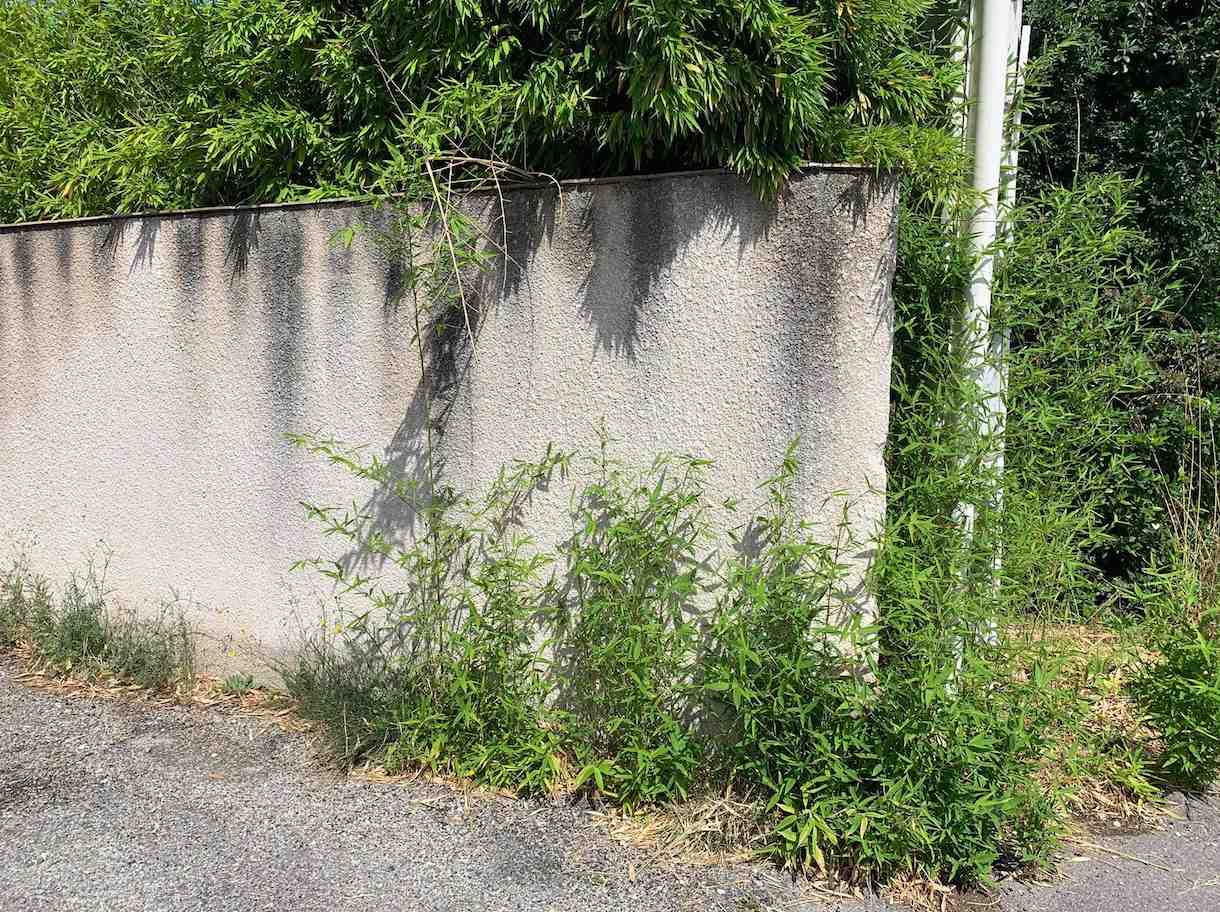
There’s a famous proverb about bamboo that says, “The first year it sleeps, the second year it creeps, and the third year it leaps.” Even after a year or two, a running bamboo will look very tame. If you poke around under the soil, however, you might find that the roots tell another story. And by the third year, you could have fresh shoots coming up everywhere.
But by then it’s too late. So a good root barrier is essential. And it will allow you keep shape your hedge in a very definite and confined space, usually something long, narrow and rectangular.
Today you can buy sheets of extremely durable black polyethylene, about 1.5 mm in thickness, and usually 24″ to 30″ in width. It’s normally available on a roll, anywhere from 25 to 100 feet in length. You might think 24″ is plenty. After all, who wants to dig a 3-foot trench all the way around their hedge? But trust me, use at least 30″, you’ll be better off in the long run. Like I’ve said before, never underestimate the perseverance of a bamboo.
The most popular, most effective, tried and true bamboo-containing material is available online from Amazon. It’s the DeepRoot Bamboo Barrier, 30″ deep by 100 ft roll. This stuff is nearly invincible, going a serious 2.5 feet underground, and the 100-ft roll gives you enough length to contain a pretty major privacy hedge. Consider it a few hundred bucks well spent on your peace of mind and good neighbor relations.
Another less expensive alternative to consider is Bamboo Shield’s 24″ by 100 foot roll.
Bamboo Shield also offers shorter rolls with deeper coverage to contain the most aggressive bamboo specimens, all available at Amazon. Check out the Bamboo Shield 30″ by 50 foot roll, or the extra heavy-duty Bamboo Shield 36″ by 25 foot roll.
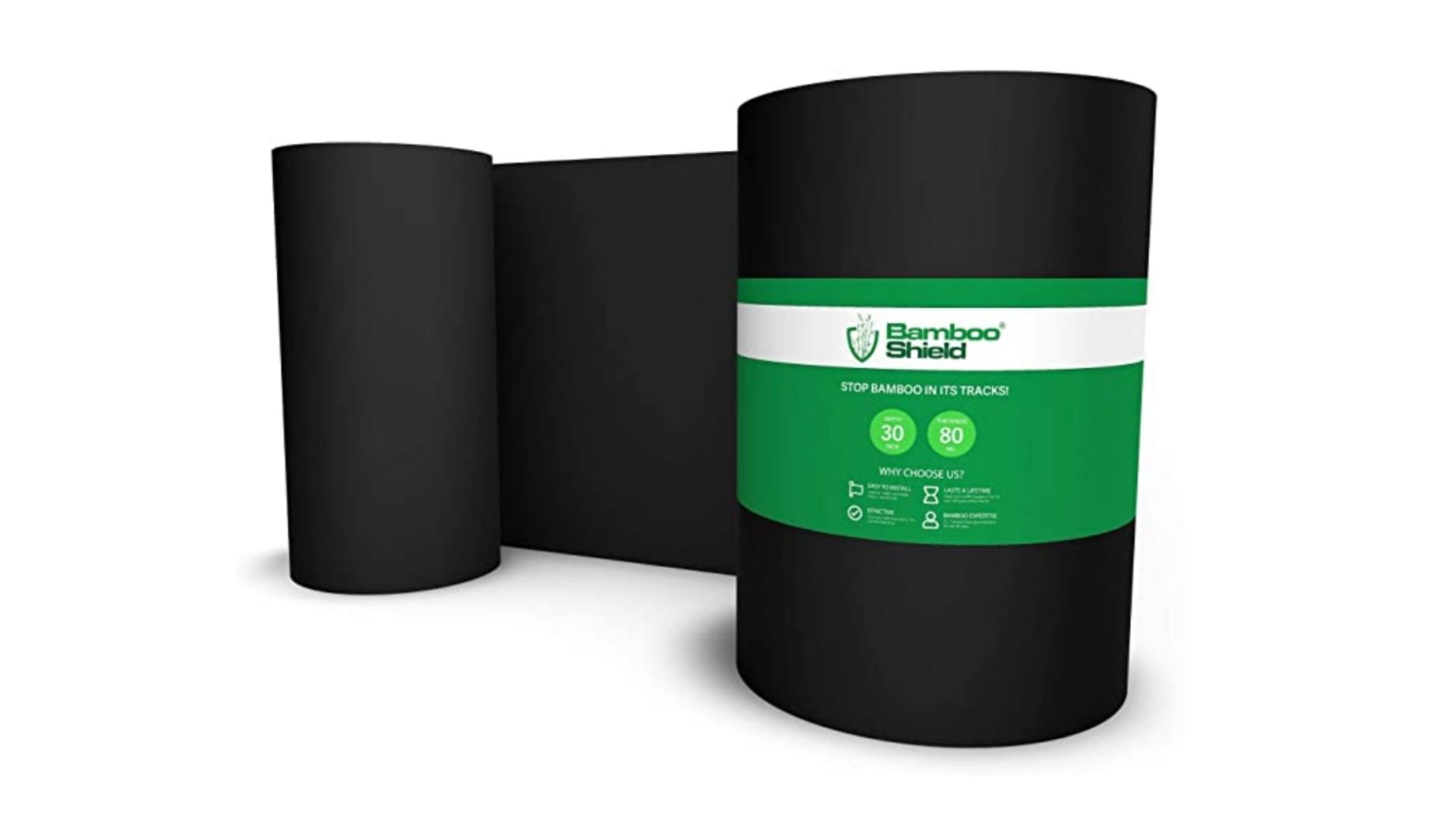
ROOT MAINTENANCE
Even if you have a good root barrier, you’ll want to poke around in the soil on a regular basis, to make sure the roots aren’t creeping through the mulch and climbing over the root barrier. At least once a year, you’ll want to go in with some heavy duty clippers and cut back some of the roots.
If you already have a bamboo hedge without a barrier, don’t panic. You still have options. A lot of gardeners just go in and prune their roots back at least once a year. Of course, this will be more work, but if you really want to build a close relationship with your bamboo, this is a terrific way to do it.
Otherwise, it’s not impossible to dig around and plant your root barrier around an existing bamboo plant. But you’ll want to conduct a deep and thorough root pruning beforehand.
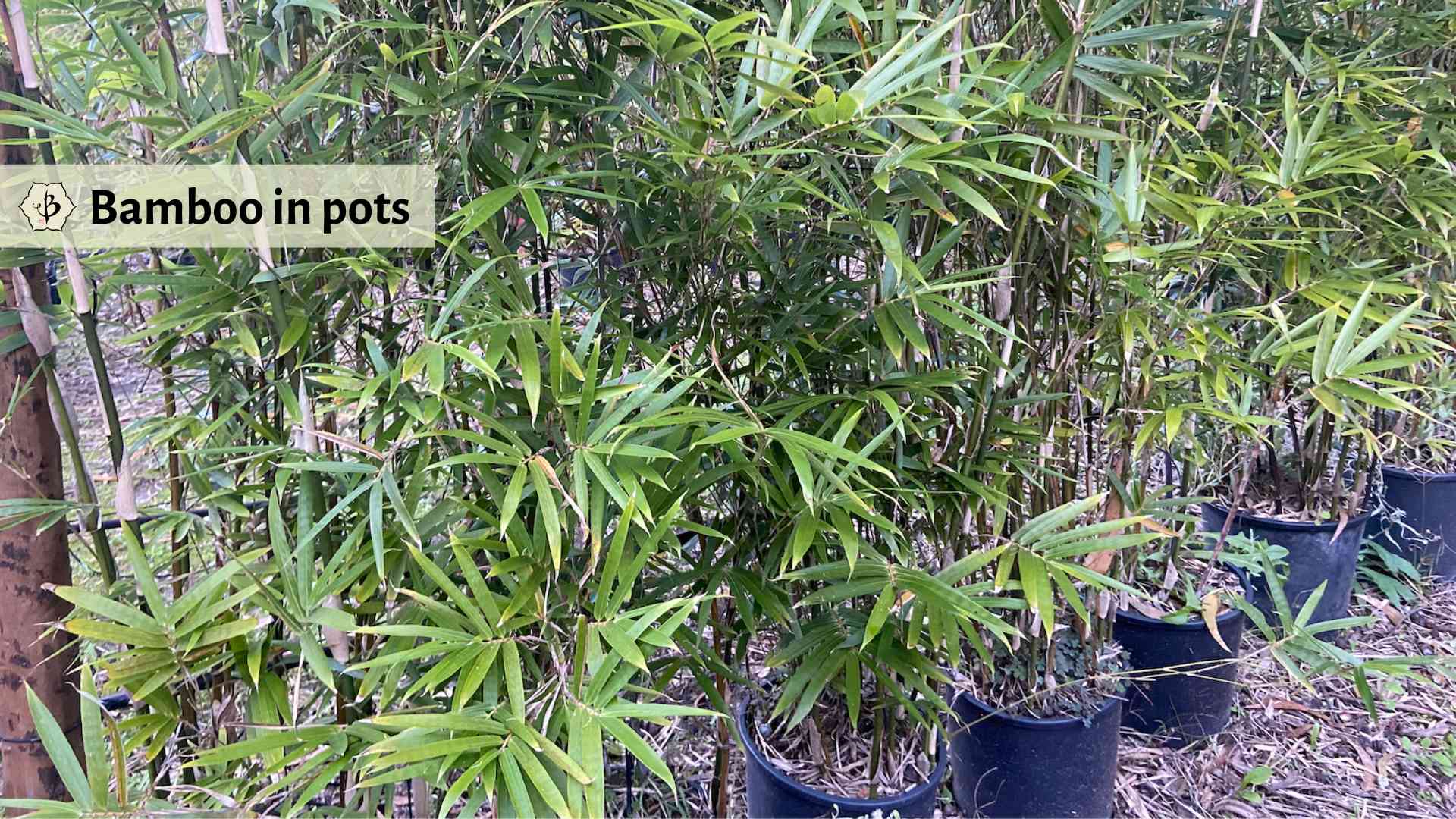
BAMBOO IN CONTAINERS
Another option, if you don’t want to get your hands dirty burying a rhizome barrier, is to keep your bamboo hedge in a series of pots or barrels. Or, with some basic carpentry skills, you can build a long, narrow planter just the right size for your hedge.
But don’t think that pots and boxes will solve all your problems. Roots still want to grow. If you don’t transplant potted bamboo and divide the rootball on a regular basis, it will probably burst through its container. Still, pulling it out of the pots and pruning the roots might be easier than digging in the ground every six months.
Also, if you have potted bamboo sitting on bare earth, the roots will eventually creep out of the drain holes and make their way into the ground. If you try to move a pot of bamboo and it won’t budge, this is probably what happened.

Selecting bamboo for a hedge
With some 2000 varieties of bamboo to choose from, selecting the best bamboo for your garden can be a challenge. The first criteria to consider is whether you want a running bamboo or a clumping bamboo. A lot of people have a fear of running bamboo, which is notoriously aggressive, so they will prefer clumping bamboo.
But if you’re planting a privacy hedge, a running bamboo might seem like a better choice. A few runners will fill out the given space more quickly and thoroughly, producing a dense and well-defined hedge. Clumping bamboo, on the other hand, will spread more slowly and might look uneven. But in fact, many modest-sized clumping bamboo species are ideal for hedges. Just plant them a little closer together than you normally would. Spacing of about 3-6 feet is usually good, depending on the size of the species, and how quickly you want to establish your privacy.
The next criterion will be the size of the bamboo. Are you looking for a 30-40′ privacy hedge? Phyllostachys vivax might be the best choice. Or will 6-8 feet be enough? Are you looking for thick bamboo poles that will knock together, or do you prefer something light and delicate with leaves that rustle in the breeze? Then a well-groomed Bambusa textilis could be a better choice.
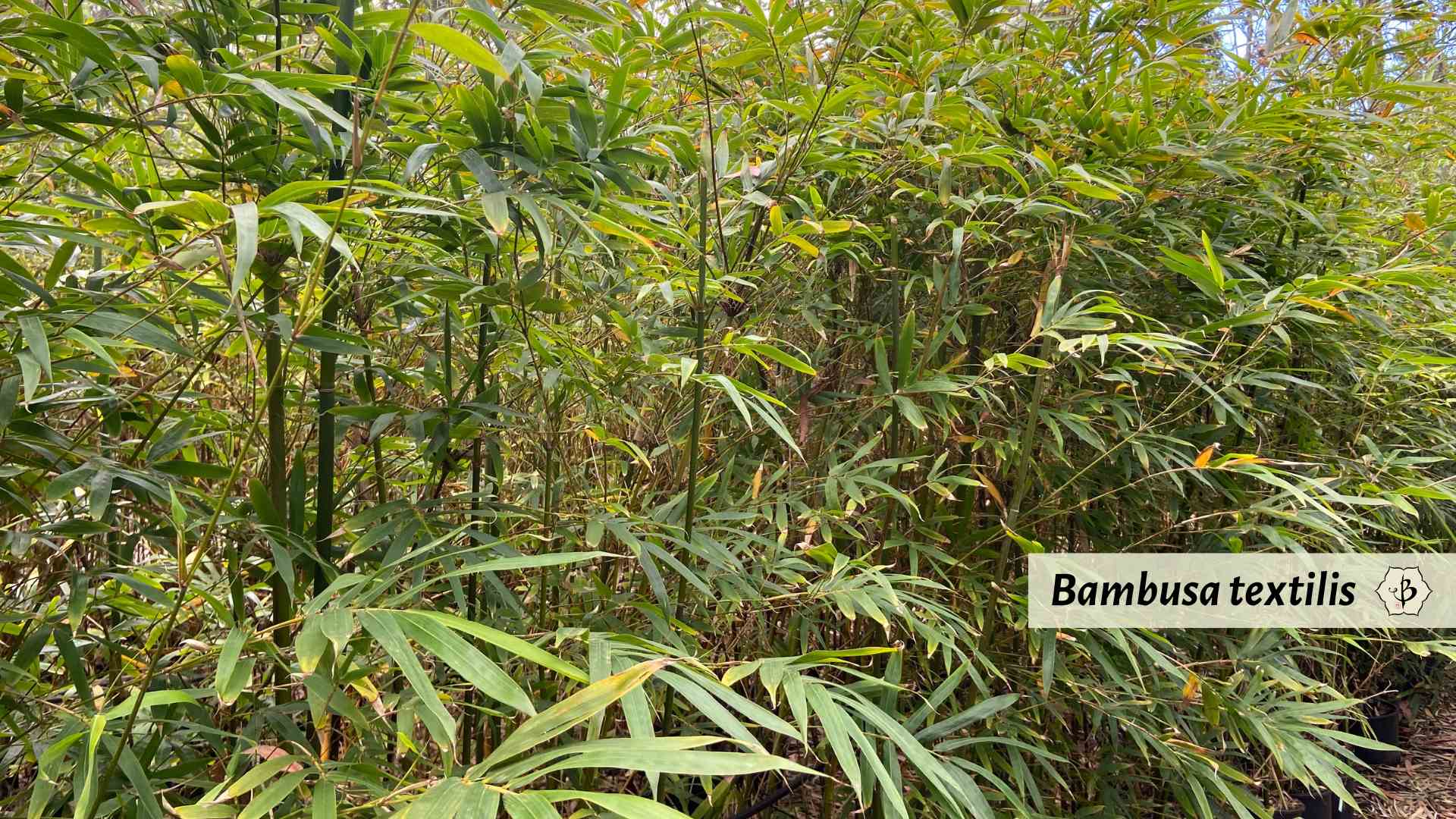
Pruning hedges
Left to grow wild, bamboo will follow its own will, and different species will tend to take different shapes. Runners may spread out and form a scattered forest. Clumpers might have dense footprints and then fan out at the top, or they might maintain a more upright aspect.
Some bamboo varieties have very few branches or leaves on the bottom of the plant. Others start bushing out right away, at ground level. If you want a dense and evenly shaped hedge, it’s not too difficult. The trick is simply to cut them across the top, like you would with any hedge, and this will encourage more leaves and branches on the rest of the plant. This dense foliage is what you want for creating privacy.
Once you cut a bamboo culm, it won’t get any taller. But the branches it produces will. So prune the plants a little lower than what you ultimately want, and allow the branches some room to grow. In the springtime, you can expect a well-established plant that has been pruned to bush out very quickly.
More bamboo tips
Check out our article on the 10 Best bamboos for your garden to learn about different varieties of bamboo and their characteristics. We also have a newer post specifically identifying the Best bamboo species for screens and hedges.
DISCLOSURE: Some of the links in this article are affiliate links. This means that, at no additional cost to you, we will earn a small commission if you click through those links and make a purchase. This helps us meet the cost of maintaining our website and producing great articles.

























